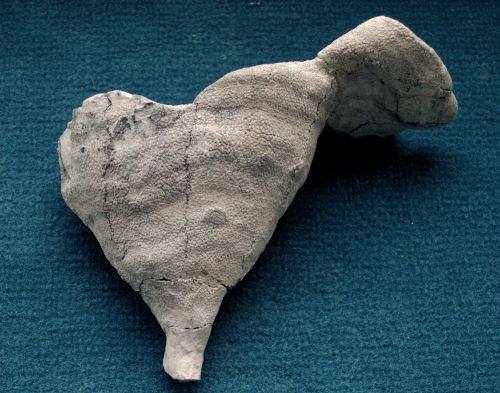
Andreaea hexagonalis
Schrammen, 1902
Andreaea hexagonalis was reported as a very rare species from Misburg by Schrammen (1912). The specimen shown here comes from the Upper Campanian of the Teutonia quarry near Misburg.
Andreaea hexagonalis forms thin-walled (2 to 3 mm) funnels with straight or lobate margins. The dermal, and particularly the gastral pores show some vague concentric alignment, probably reflecting growth stages. The specimen shown here has a short stem with three root stubs.
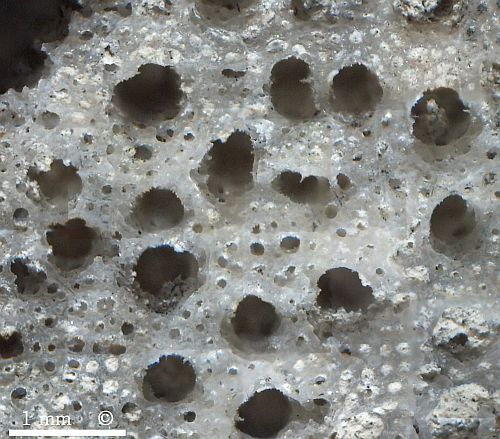
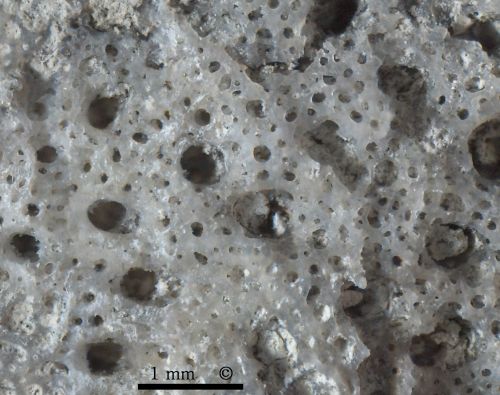
Photomicrographs of etched gastral and dermal surfaces of Andreaea hexagonalis.
The inhalent and exhalent pores are irregularly distributed and separated by bridges with numerous small perforations. The bridges are formed by heavily silica-mantled surface hexactines and are wider on the gastral than on the dermal surface. Also, the exhalent pores (postica) on the gastral side are slightly larger than the inhalent pores (ostia) on the dermal side.

Andreaea hexagonalis. Detail of two postica, with acute, unmated hexactine rays protruding into the aporhyses.

This cross fracture through the wall of Andreaea hexagonalis shows nicely the more disordered skeleton near the dermal surface, whereas the internal (parenchymal) parts and the gastral parts show a more ordered style: The hexactines form predominatly cubic meshes around the epirhyses and aporhyses; they also line up to form outwardly divergent strands.
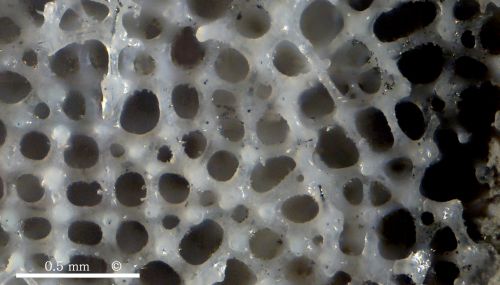
Internal wall of an epirhysis. Contrary to the aporhyses, the epirhyses show rounded, obtuse hexactine terminations facing towards the canal axis.
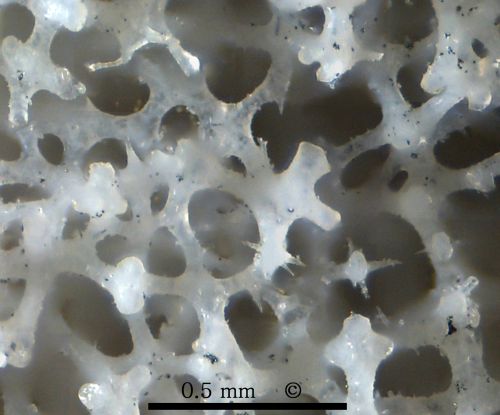
Andreaea hexagonalis. Detail of the skeleton, showing small, hexactine-like formations on larger parenchymal hexactines.